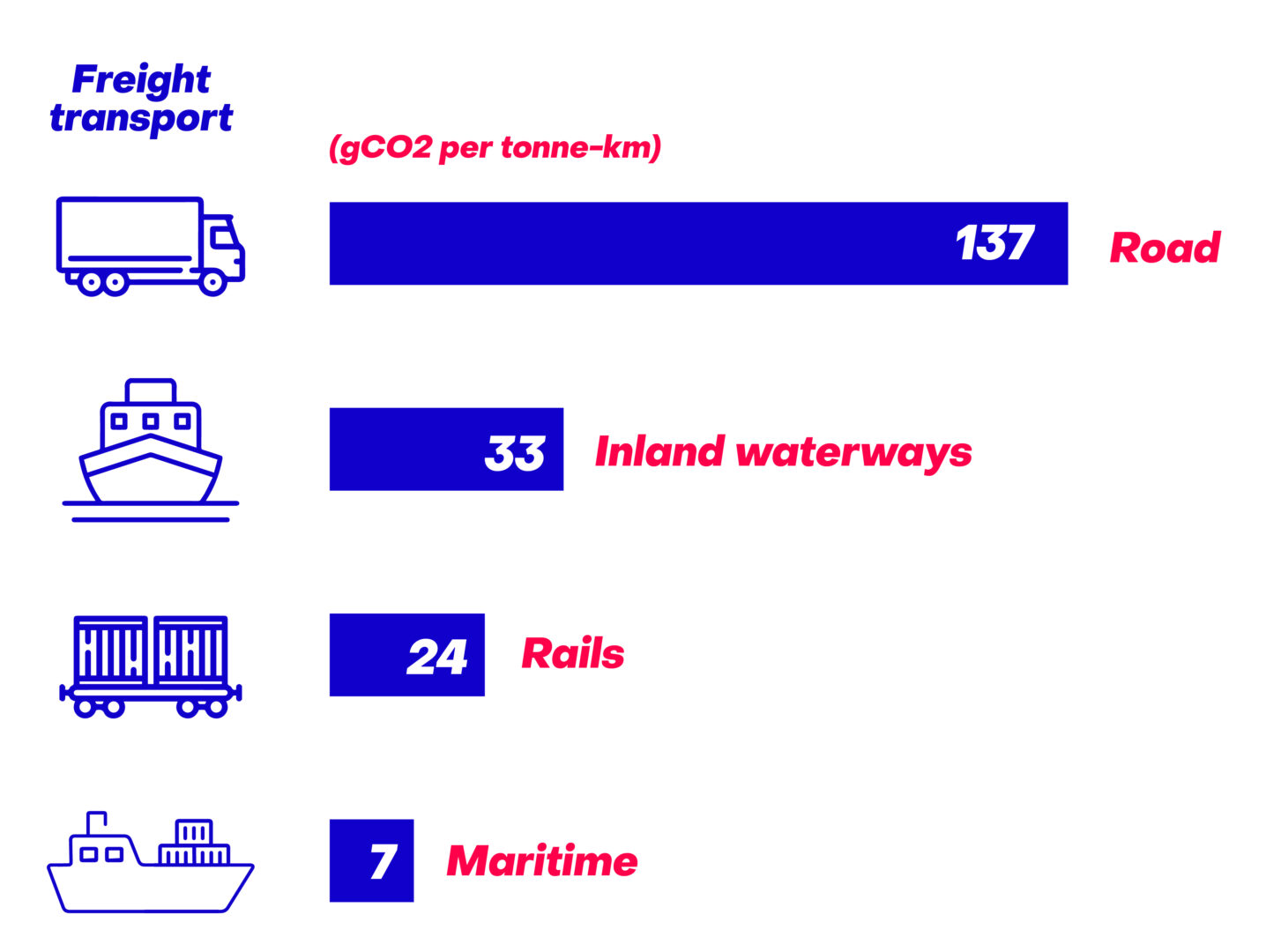A SUSTAINABLE SWITCH:
3 ADVANTAGES OF INTERMODAL
TRANSPORT OVER TRADITIONAL
LONG-DISTANCE TRUCKING

WHAT IF YOU WERE TOLD THERE WAS AN ALTERNATIVE TO TRADITIONAL ROAD TRANSPORT THAT COULD MAXIMISE EFFICIENCY AND LOWER YOUR CARBON FOOTPRINT? LEARN ABOUT INTERMODAL TRANSPORT, A USEFUL AND ENVIRONMENTALLY FRIENDLY WAY TO TRANSPORT YOUR GOODS.
Intermodal transport refers to the movement of goods in one single loading unit (such as a trailer or a container) using a combination of modes of transportation: trucks, ships, or trains. In terms of flexibility, speed, cost, and environmental impact, this approach takes advantage of the relative advantages of each method (Publications Office of the European Union).
A decrease in the use of long-haul trucking
By utilising alternative methods of transportation, such as rail and unaccompanied RORO (roll-on/roll-off) shipping, intermodal transport reduces the reliance on traditional long-haul trucking. Be aware, however, that this approach does not replace trucks. It instead merges trucks with trains and cargo ships to deliver goods with improved efficiency.
Benefit #1: Lower emissions of greenhouse gases
Greenhouse gas emissions are considered a major contributor to climate change. Road transport is responsible for nearly 75% of the emissions generated by the transport industry in Europe. The movement of goods by trucks accounts for about 25% of this amount.
In comparison to trucks, the CO2 emissions generated to transport freight by inland waterways, rail, and maritime shipping are very low.

CO2 emissions by mode of freight transport. Source: Public Office of the European Union.
While most ships burn fossil fuels, which release CO2, they are able to move vast amounts of freight at once. Road freight, however, can emit more than 100 times as much CO2 as ships to transport the same quantity of goods over the same distance.
These are the sources of our global freight emissions in 2020:
- Air freight emitted 155 million tonnes of CO2
- Rail freight emitted 170 million tonnes of CO2
- Sea freight emitted 657 million tonnes of CO2
- Road freight emitted 2.2 billion tonnes of CO2
These figures show that intermodal transport and a shift away from solely using roads can significantly contribute to the environmental friendliness of freight transport.
Benefit #2: less transportation expenses
Compared to trucks, trains are roughly four times more fuel-efficient. If 10% of longdistance highway freight transfers to rail, 12 billion gallons of fuel will be saved annually.
Intermodal transportation lowers fuel consumption and, as a result, cuts down on transportation expenses, which directly benefits your business. For example, companies that switch long-haul freight from the highway to intermodal rail typically experience cost savings in the range of 10% to 40%.
“INTERMODAL TRANSPORT REFERS TO THE MOVEMENT OF GOODS IN ONE SINGLE LOADING UNIT USING A COMBINATION OF MODES OF TRANSPORTATION: TRUCKS, SHIPS, OR TRAINS.”
Benefit #3: less traffic congestion
Did you know that one train can haul the same amount of goods as 60 trucks
delivering conventional palletised products? Taking into account that both trains and ships can carry more than trucks, intermodal transport helps to alleviate traffic congestion. Vehicle excesses are related to various detrimental effects:
- Commuter costs, which include lost time, unreliable travel times, and more
frequent vehicle repairs - Safety costs, such as more collisions, increased stress levels, and a higher risk of road rage
- Environmental costs, think of wasted fuel, increased CO2 and higher air pollution levels (of black carbon, for example) that have a negative impact on health
NDQ’s investments in intermodal transport
In order to help customers reduce their carbon footprint, NDQ has embraced intermodal transport and invested in the necessary infrastructure and expertise.

Goods that are sent by train now arrive directly in NDQ’s state-of-the-art, railconnected warehouse in Zeebrugge. From there, the trailers are loaded onto a vessel and shipped unaccompanied to the UK. They are shipped to the port that is closest to the final destination, drastically reducing the driving distance on the UK mainland.
Curious to know more about the most efficient and sustainable way of transporting your freight to and from the UK?

